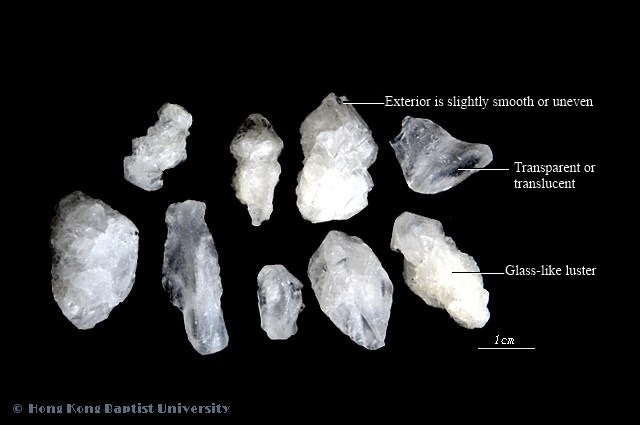Production RegionsPrimarily produced in the Chinese provinces of Zhejiang, Fujian, Anhui, Shanxi.
Macroscopic FeaturesAlumen belongs to trigonal system. Crystals are small and thin rhomboid or plate-shaped, usually presents as compact lumps, thin granules or earthy texture. Externally colorless, white, usually pale yellow or light red. Streaks are white. Glass-like luster; cleavage plane presents slightly pearl-like luster. Clumps present with dark luster or a slightly wax-like luster. Transparent or translucent. Fractured crystals present as shell-shaped; clumps present schistose, stagger or earthy. Hardness 3.5~4. Density 2.6~2.8. Brittle texture.
Quality RequirementsSuperior medicinal material consists of large lumps that are colorless, translucent and free of impurities.
PropertiesSour, astringent; cold, toxic.
FunctionsExternally used to resolve toxin and kills worms, and dry dampness and relieve itching. Internally used to stop bleeding, relieve diarrhea and eliminates wind-phlegm. Applied to stroke, epilepsy, pharyngitis, scabies, tinea, moisten sore, abscess, carbuncle, swollen toxin; scald due to water or fire; mouth and tongue sore; marginal blepharitis and wind sore; purulent ear; nasal polyp; pain hemorrhoid; flooding and spotting; allergic rhinitis; bleeding wound; chronic diarrhea; vaginal discharge with pudendal itch; rectal prolapse; uterine prolapse.
OriginA refined mineral product made from alumite, which largely consists of [KAl (SO 4 ) 2 ·12H 2 O].
